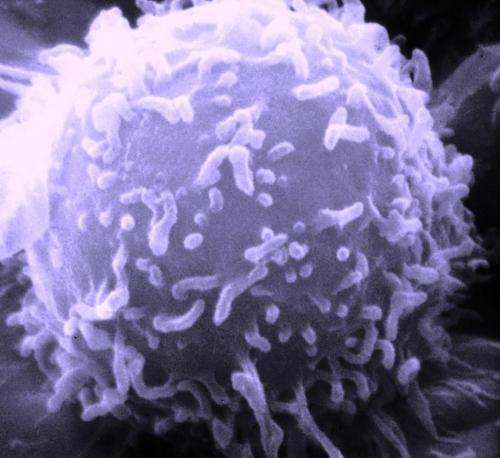Scientists show how cancerous cells evade a potent targeted therapy

Imagine developing a drug designed to inhibit a protein that helps cancer cells proliferate and survive only to find that the drug does not perform very well in the clinic. This was the dilemma faced by scientists researching inhibitors of signal transducer and activator of transcription (STAT3), a protein that controls transcription by the STAT3 gene. When STAT3 was knocked out in a mouse model, researchers observed increased T-cell immune responses, suggesting a valuable therapeutic target. However, targeting STAT3 in tumors has had only limited success to date.
Now, researchers at The Wistar Institute have discovered how STAT3 behaves in immature myeloid cells known as myeloid-derived suppressor cells (MDSCs), and they believe they have found the basis for a much more effective method of using STAT3 inhibitors to stop cancer progression in its tracks. The findings were published in the journal Immunity.
In healthy individuals, MDSCs regulate immune responses and tissue repair, and the population of these cells rapidly expands during inflammation, infection and cancer. However, when these myeloid cells migrate to tumor sites, they can differentiate to tumor associated macrophages (TAMs), which can in turn stimulate the formation of blood vessels in tumors and promote enhanced tumor cell invasion and motility. Previous studies showed that STAT3 plays a major role in the expansion of MDSCs, so the researchers decided to study if there was a link between STAT3 and MDSC differentiation.
"Studies pointed to STAT3 being an important target in the development of cancer," said Dmitry I. Gabrilovich, M.D., Ph.D., the Christopher M. Davis Professor and Professor and Program Leader in the Translational Tumor Immunology Program at The Wistar Institute and lead author of the study. "Clinically speaking, we do not observe the robust results that we would expect. The purpose of this study was to discover why this is happening and figure out a way to make these therapies as effective as our research would suggest."
Gabrilovich and colleagues analyzed blood samples from patients with cancer to determine the level of activity. Even though STAT3 activity drives the expansion of MDSCs and is involved in immune responses mediated by the cells, they found that high levels of STAT3 activity actually prevent the differentiation of MDSCs to macrophages. Low levels of STAT3 inside tumors are what cause this activity, but the levels are low enough that STAT3 inhibitors cannot effectively target STAT3.
What causes the lower levels of STAT3 activity in tumor MDSC that help drive their differentiation to TAMs? The answer lies in the tumor microenvironment. Hypoxia, or a lack of oxygen, is a phenomenon in tumors that occurs when they outgrow their blood supply. When hypoxia occurs, the activity of CD45 - a protein found in myeloid and lymphoid cells - increases. This increase in CD45 activity is what lowers the levels of STAT3, allowing for the differentiation of MDSCs to TAMs.
Finally, the researchers wanted to see whether targeting CD45 would help STAT3 inhibitors become more effective. In a sarcoma that was shown to be resistant to STAT3 inhibitors, the team used a combination of an experimental STAT3 inhibitor called JSI-124 (cucurbitacin I) and sialidase, an enzyme that disrupts CD45 activity. When either JSI-124 or sialidase were used alone, they either did not have any effect tumor growth or enhanced tumor progression, respectively. When the pair was used together, the result was substantial antitumor activity.
"Our results suggest that sialidase could sensitize myeloid cells in tumors to previously ineffective STAT3 inhibitors," said Vinit Kumar, Ph.D., staff scientist in the Gabrilovich laboratory at The Wistar Institute and first author of the study. "We confirmed that STAT3 is indeed a great potential target for cancer immunotherapies as long as we account for the other factors affecting the tumor microenvironment."
More information: Immunity, dx.doi.org/10.1016/j.immuni.2016.01.014



















